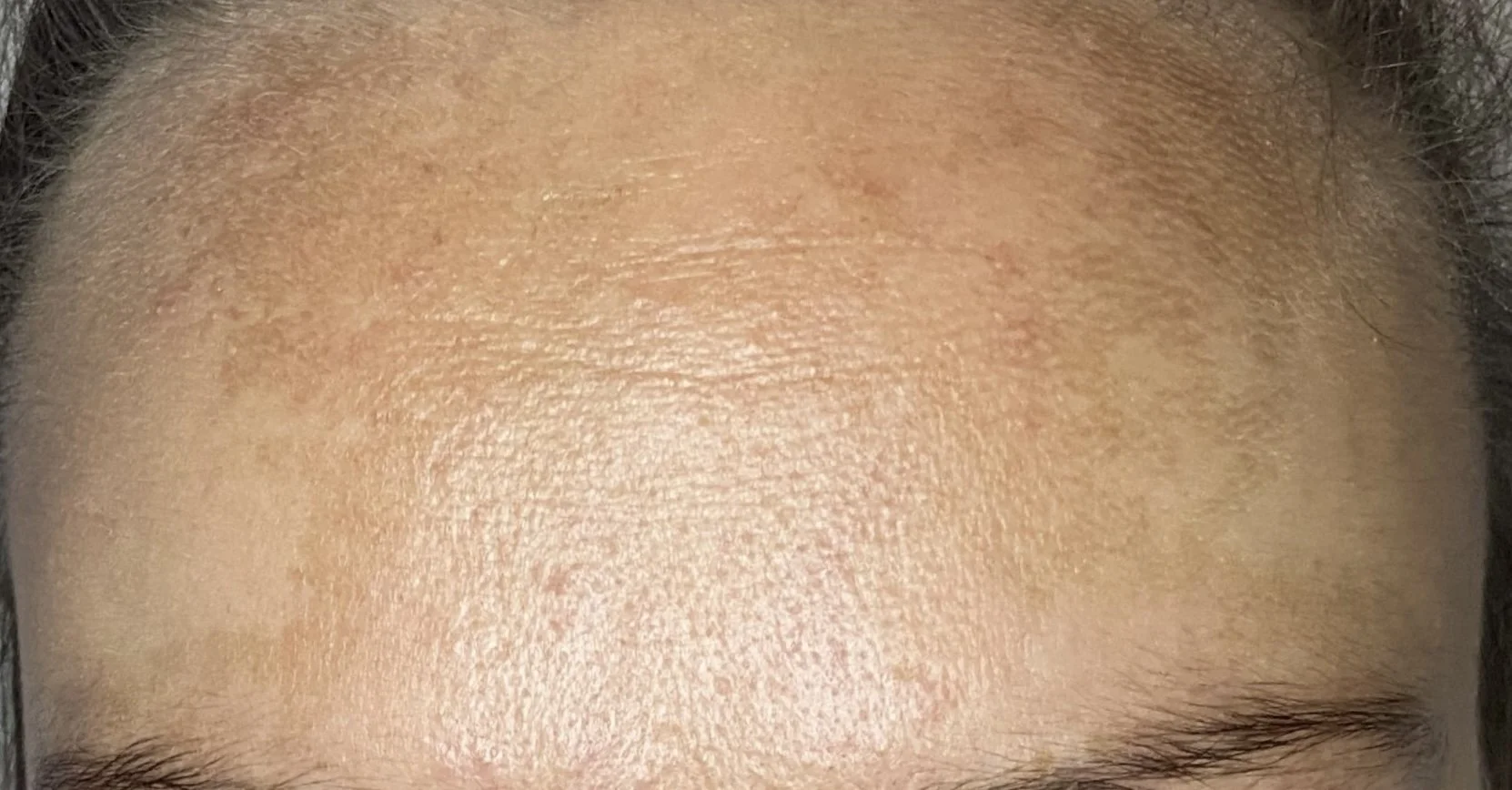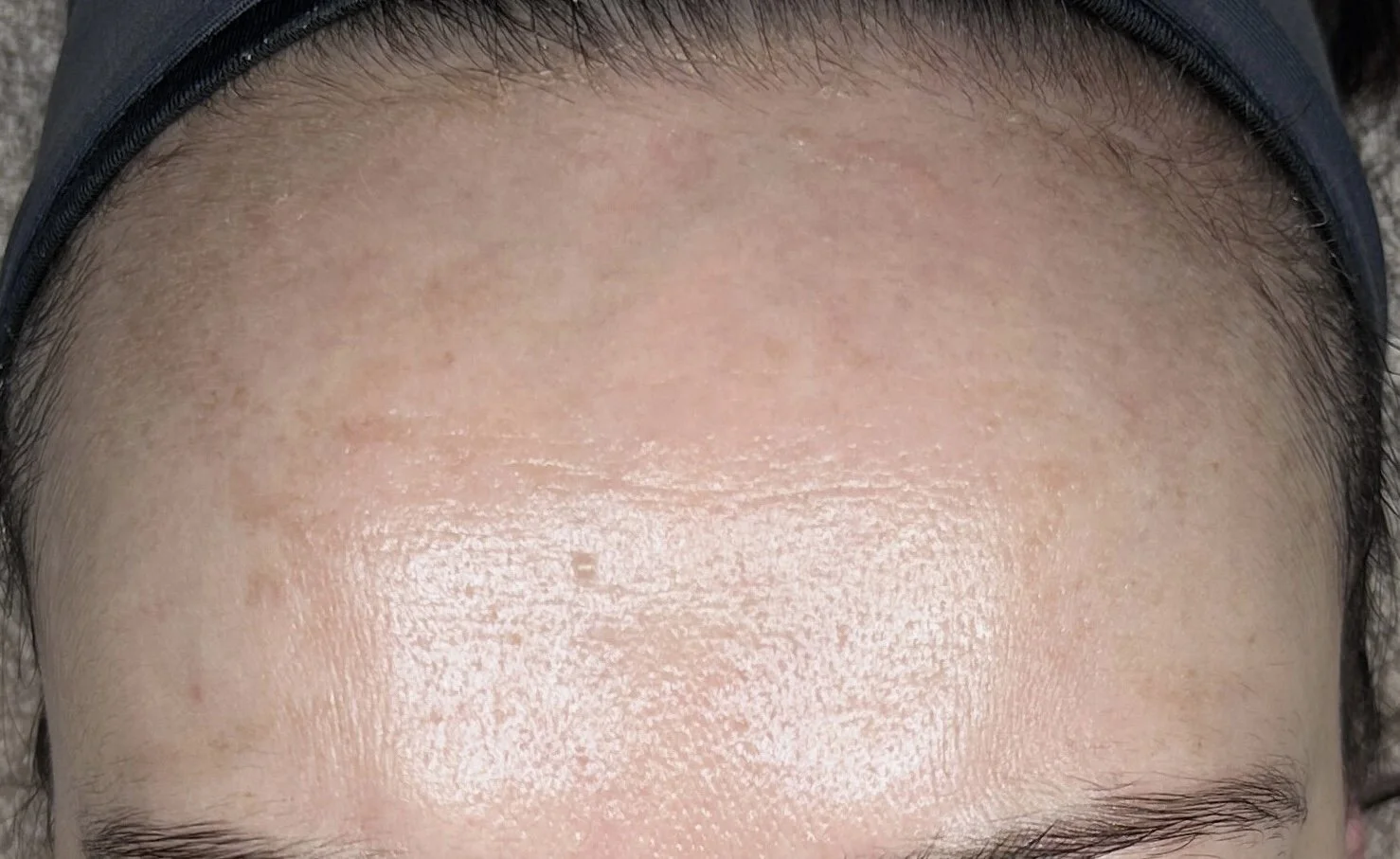Pigmentation: What It Is, Why It Happens, and How to Calm It Down (For Real)
Let’s be honest—dealing with pigmentation issues like melasma and post-inflammatory hyperpigmentation (PIH) can be a lot. One minute your skin’s doing OK, the next it’s throwing dark patches at you that won’t budge no matter what serum TikTok is shouting about.
If you’ve noticed stubborn discolouration that seems to flare up around hormones, sun, or spot picking—this one’s for you.
What Is Pigmentation and Why Does It Show Up Like That?
Pigmentation basically means areas of your skin are making more melanin than they should. This shows up as:
Melasma – Often linked to hormonal shifts (pregnancy, HRT, birth control). Shows up as symmetrical brown patches, mostly on the face.
Post-Inflammatory Hyperpigmentation (PIH) – The “souvenir” your skin leaves behind after inflammation like spots, scratches, or burns. Especially common if you’ve been picking. (Yep, we’ve all done it.)
These aren’t just random—they’re often your skin trying to protect itself. But that doesn’t mean we have to put up with it.
Hormones, Babies & That ‘Mask’ That Won’t Budge
Melasma is often triggered by big hormonal shifts—think pregnancy, birth control pills, or HRT. These changes can send your melanin production into overdrive. Add sun exposure into the mix, and voilà: pigmentation city.
Here’s the kicker: it’s not always about what you put on your skin. Hormonal pigmentation needs a whole-body approach. That means skincare, sun habits, and sometimes looking at your internal health.
Let’s Talk Spot Picking (Yes, It’s Connected)
You’ve got a spot. You pick it (we get it, it’s tempting). Now the inflammation is worse, and your skin’s healing with a dark mark. That’s PIH—and if your skin is darker or more reactive, it can hang around for ages.
The key? Calming inflammation before it even starts, and treating your skin like it’s precious (because it is).
What Actually Helps? (Hint: It’s Not a Magic Cream)
Physical Sunscreen Only
Chemical sunscreens can be hormone disruptors and often irritate already-inflamed skin. Physical sunscreens (with zinc oxide or titanium dioxide) are your best friend. They sit on the skin, reflect UV rays, and don’t mess with your hormones.
Pro tip: Wear that SPF daily—even indoors. And if you’re near windows, in the car, or chilling in the conservatory, yep, still wear it.
Cover Up & Cool Down
Hats with wide brims.
Sunglasses (protect your eye area too).
Stay out of saunas or hot yoga if pigmentation is flaring.
Keep your skin cool when possible—heat can worsen melasma even without direct sun.
Gentle, Targeted Skincare
When it comes to pigmentation, aggressive treatments often backfire. Over-exfoliating, harsh scrubs, or overly strong actives can trigger inflammation—which leads to more melanin production and deeper discolouration.
Instead, I focus on treating the skin using a 360 degree approach, targeting internal health with supplementation as well as treating the skin with targeted medical-grade products. These products contain tyrosinase inhibitors (which calm down excess melanin activity) as well as soothing, anti-inflammatory ingredients to protect your skin barrier while fading pigmentation gently. These products are backed by science and don’t overwhelm your skin and the results speak for themselves just check out my clients results below.
Not Sure If It’s Melasma, PIH, or Something Else?
Pigmentation can be confusing—it’s not always easy to tell what’s going on, or where to start. If you’re noticing discolouration, patchy tone, or marks that won’t fade and you're wondering what’s behind it, I’d love to help.
Fill out my consultation form here and I’ll take a closer look to help you figure out what’s happening with your skin and how to calm things down, step by step.
You don’t have to guess your way through it. Let’s get clear—together.


